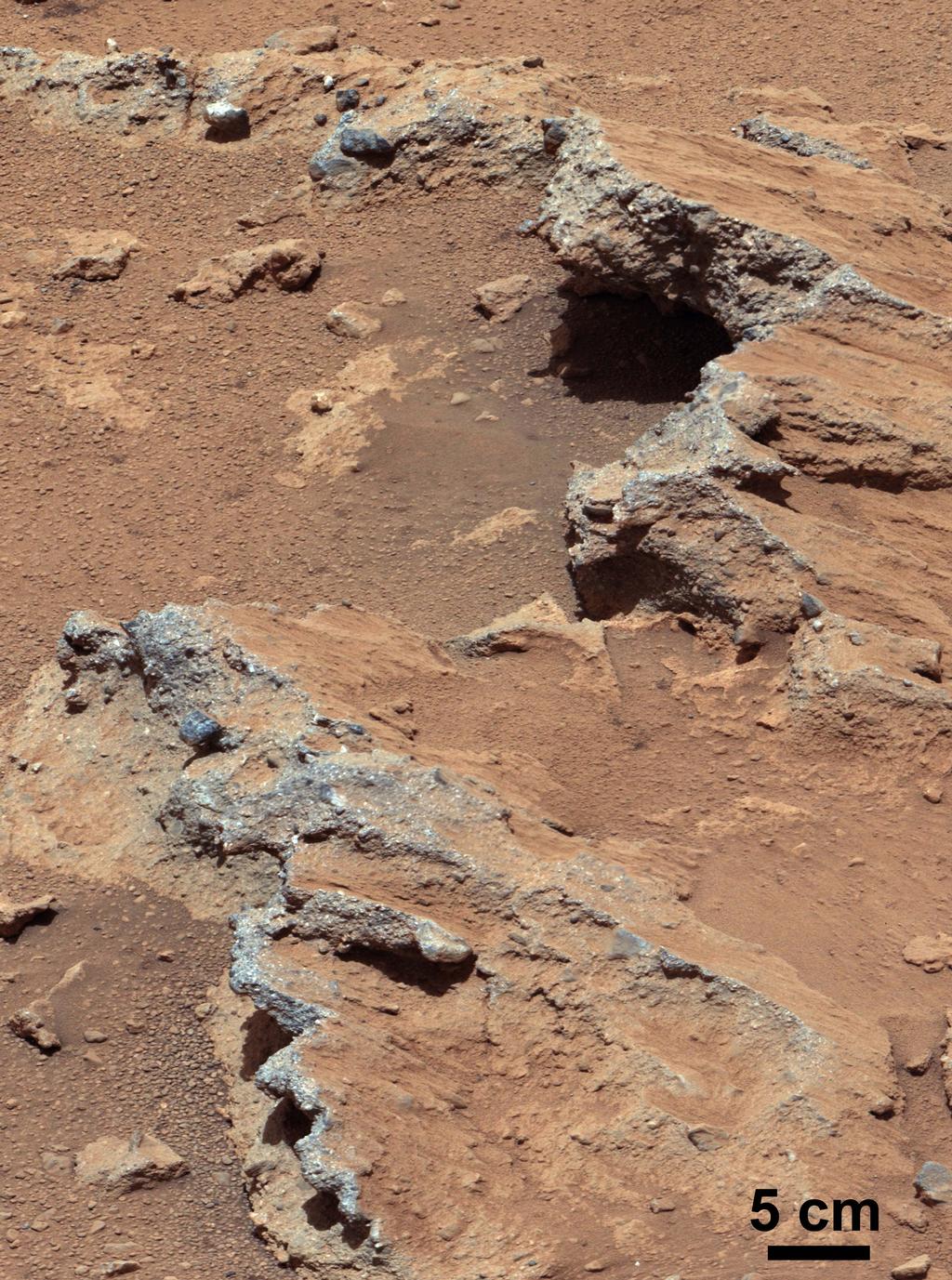Life on Mars? Not Looking Good
Friday, October 4th, 2013October 4, 2013
Hopes that microbes may be living beneath the harsh surface of Mars have been seriously dampened by new findings from the Curiosity rover. Over the past 10 years, Mars-orbiting satellites and telescopes on Earth have produced data showing small but significant amounts of methane gas in the red planet’s atmosphere. Although methane can be produced by geological processes, most of the methane in Earth’s atmosphere is a by-product of animal digestion or comes from decaying plants. Perhaps, scientists thought, the same was true on Mars. However, a study by Curiosity failed to detect any methane at all, scientists at NASA’s Jet Propulsion Laboratory reported.
From October 2012 to June 2013, Curiosity searched for signs of methane in samples of the Martian atmosphere using its Sample Analysis at Mars (SAM) laboratory. The previous research had revealed methane levels of up to 45 parts per billion (ppb). But Curiosity’s data showed nothing above 1.3 ppb, the minimum detectable by the SAM laboratory. Curiosity’s findings suggest that the satellite and telescope readings were incorrect or that the gas has disappeared. But Sushil Atreya of the University of Michigan, Ann Arbor, one of the paper’s co-authors, said, “There’s no known way for methane to disappear quickly from the atmosphere. Methane is persistent. It would last for hundreds of years in the Martian atmosphere. Without a way to take it out of the atmosphere quicker, our measurements indicate there cannot be much methane being put into the atmosphere by any mechanism, whether biology, geology, or by ultraviolet degradation [breakdown] of organics delivered by the fall of meteorites or interplanetary dust particles.” Scientists who reported finding methane argued that more research was needed to rule out the existance of microbial life.

Gravel at this site photographed by Curiosity shows evidence of an ancient streambed. (NASA/JPL-Caltech/MSSS)
The search for existing life on Mars is not quite over, however. Curiosity scientists plan to retune the SAM laboratory to enable it to detect amounts of methane of less than 1 ppb. Moreover, Curiosity’s findings don’t totally rule out the presence of life on Mars. “This important result … reduces the probability of current methane-producing Martian microbes, but … addresses only one type of microbial metabolism. As we know, there are many types of terrestrial microbes that don’t generate methane,” said Michael Meyer, NASA’s chief scientist for Mars exploration.
The SAM laboratory findings also don’t affect efforts to determine whether life existed on Mars in the past. Only two months after landing, Curiosity found direct evidence that billions of years ago, a deep, fast-moving stream of water once flowed across Gale Crater, the rover’s landing site. This discovery showed that Mars had once been capable of supporting life. Whether it did is an open question.
Additional World Book articles:
- Mars Pathfinder
- Mars Science Laboratory
- Space exploration
- The Search for Water on Mars (a special report)




